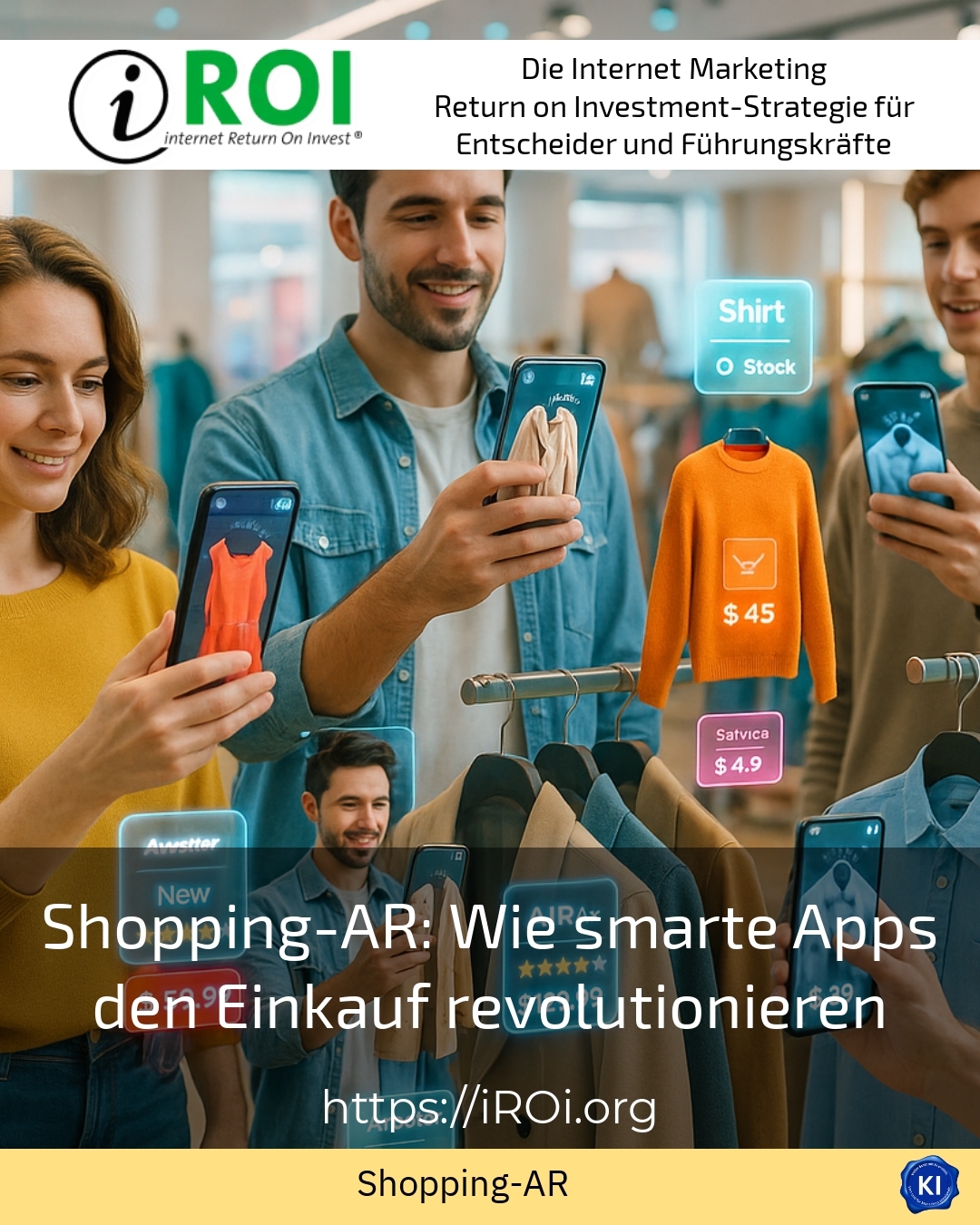In the digital transformation, innovative technologies are opening up new perspectives for shopping experiences. Shopping AR plays an important role in this because it enables customers to experience products virtually in their own environment. These smart applications help customers to make purchasing decisions more confidently and conveniently. This not only makes the shopping experience more appealing, but also more effective.
Shopping AR as a bridge between digital and real
Shopping AR combines the real world with digital content. Users use the camera on their smartphone or tablet to view virtual objects such as furniture, items of clothing or cosmetic products in their immediate surroundings. This is made possible, for example, by Ikea Place, which visualises furniture in your own living room before you buy it, or Sephora, which shows a virtual make-up test directly on your face. Amazon AR View also offers the opportunity to virtually place a wide variety of products in a room and thus better assess their fit and aesthetics.
These applications not only take the uncertainty out of online shopping for customers, but also give them the impetus to experience a product from a new perspective. In the fashion industry, too, companies such as Nike are using their „Nike Fit“ app to show how AR can help customers choose the right size when trying on shoes and reduce returns.
BEST PRACTICE with one customer (name hidden due to NDA contract) A retail company used Shopping AR specifically to intensify interaction with the product range. Customers were able to try on shoes virtually, which increased their willingness to buy and reduced the return rate by more than 20 %. At the same time, the retailer received valuable data to analyse preferences for future product selection and marketing strategies.
Practical fields of application of Shopping-AR
Shopping-AR accompanies consumers in a wide variety of situations. In the furniture sector, it facilitates the selection process by realistically projecting the product dimensions into the home. This eliminates the surprising disappointment when unpacking because the dimensions or design do not match the room. Applications from Wayfair or Home Depot, for example, allow such room integration.
In the fashion sector, clothes can be tried on virtually. Brands such as Zara offer AR catwalks in selected shops where customers can see how they might look in the latest collections - digitally and without having to change clothes. These experiences promote individualised and quick purchasing decisions.
In the cosmetics segment, it's often about colour selection and texture. Sephora's „Virtual Artist“ makes it possible to test make-up products directly on your own face, which often makes a trip to the shop unnecessary. Dulux offers a wall colour app that allows users to view new shades virtually on the wall in advance. In this way, shopping AR also includes sectors outside of traditional retail and offers added value there.
BEST PRACTICE with one customer (name hidden due to NDA contract) A fashion retailer used Shopping AR for the launch of a new summer collection. The virtual fitting room in the shop created an interactive experience that extended the time customers spent in the shop and increased sales revenue at the same time. Feedback showed that instead of making spontaneous decisions, many visitors were now making more conscious and targeted purchases.
Shopping AR and personalised advice
Modern shopping AR apps offer more than just product visualisation. They can act as virtual assistants. Possibilities range from targeted product searches to personalised recommendations. Retailers use them to create new points of contact with customers in order to promote up- and cross-selling and personalise purchases.
AR-based navigation functions in the shop show the way to specific items and provide additional information on the display. Profile integration allows customised promotions, which increases both customer loyalty and sales. This intelligent assistance makes shopping faster and more enjoyable.
BEST PRACTICE with one customer (name hidden due to NDA contract) A large department stores' implemented an AR app that guides customers through the shop and displays relevant product information. The personalised approach led to a significant improvement in customer satisfaction and a measurable increase in the quality of advice, which was also reflected in better sales.
My analysis
Shopping AR is becoming an important tool for designing modern shopping experiences. This technology supports customers in making informed decisions by allowing them to experience products virtually in their own environment. Due to the improved interactivity and personalisation, many companies report higher sales and reduced returns. iROI coaching accompanies them on this path and provides valuable impulses for the successful implementation of Shopping AR projects.
The numerous examples from the furniture, fashion and cosmetics sectors illustrate how diverse and cross-sectoral Shopping AR is. It is a forward-looking tool for retailers to differentiate themselves from the competition and give customers new impetus. Shopping AR not only helps to reduce the inhibition threshold when shopping online, but also to digitally enhance stationary experiences.
Further links from the text above:
[1] Augmented reality in e-commerce: the future of online shopping
[2] Examples of AR in eCommerce
[3] AR shopping in e-commerce: the most important trends and
[4] Examples of AR shopping applications: Then and now
[5] AR apps in retail: how they work, areas of application ...
[6] 5 Fresh Examples of Augmented Reality in Ecommerce
[8] Top 6 brands for augmented reality shopping experiences
[9] Shopping with augmented reality: how to expand your ...
[10] Augmented reality shopping - examples and tips
For more information and if you have any questions, please contact Contact us or read more blog posts on the topic internet Return on Investment - Marketing here.















